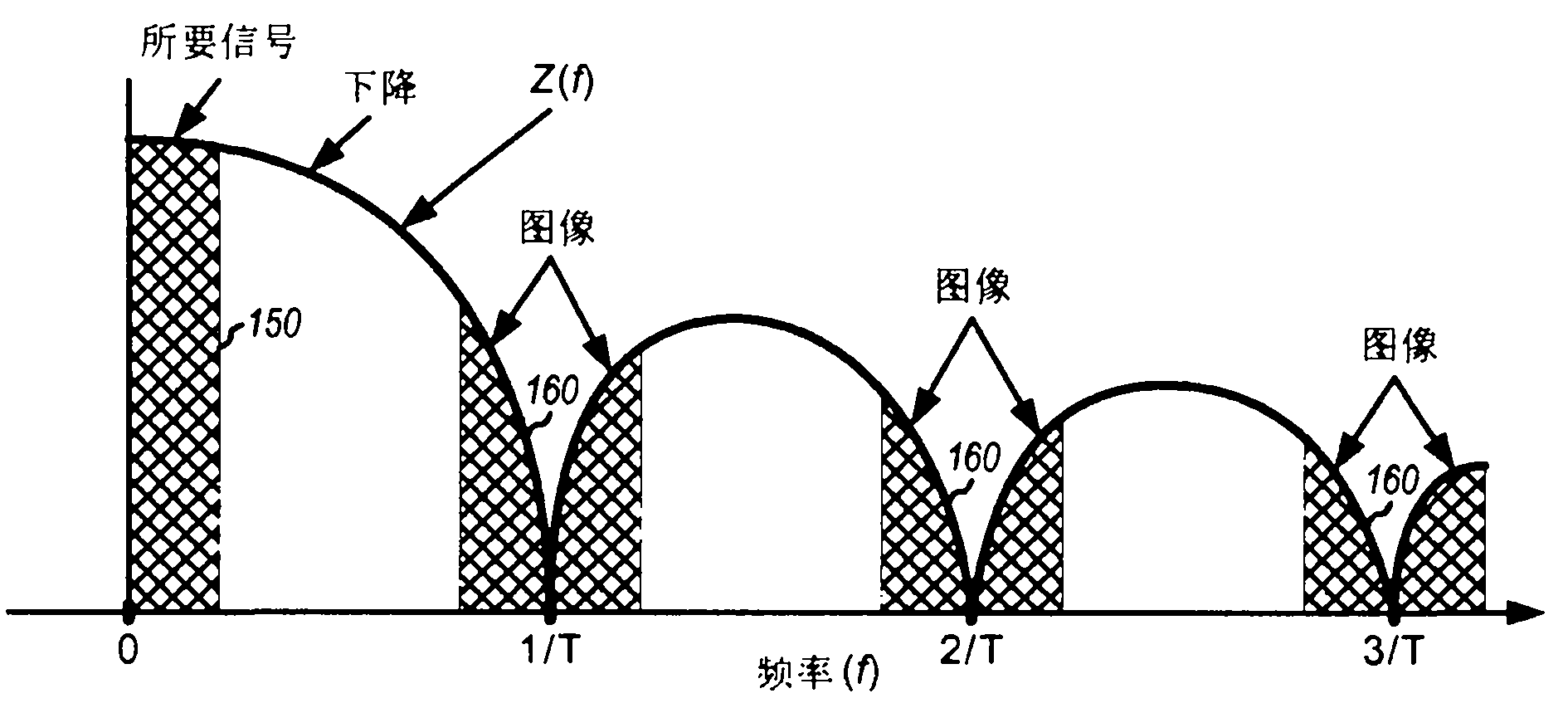Adaptive high-order digital-to-analog conversion
A model and parameter technology, applied in the field of electronics, can solve the problems of complex analog circuits, increasing the complexity and cost of electronic devices, etc.
- Summary
- Abstract
- Description
- Claims
- Application Information
AI Technical Summary
Problems solved by technology
Method used
Image
Examples
Embodiment Construction
[0022] Figure 1A A block diagram of an apparatus 100 that performs digital-to-analog conversion in a conventional manner is shown. Within device 100, digital circuitry 110 receives and processes digital data and provides a digital input signal d(n), where n is a sample index. DAC 120 converts the digital input signal from digital to analog using zero-order hold and provides an analog input signal where t is a continuous time variable. A reconstruction filter 130 filters the analog input signal and provides an analog output signal The filter 130 may perform various functions such as image attenuation caused by digital-to-analog conversion, compensation for frequency response degradation due to zero-order hold, and the like.
[0023] Figure 1B exhibit Figure 1A The digital input signal d(n) and the analog input signal in timing diagram. The digital input signal at discrete time n 1 , n 2 etc. contain numeric values. DAC 120 generates an analog input signal by outpu...
PUM
 Login to View More
Login to View More Abstract
Description
Claims
Application Information
 Login to View More
Login to View More - R&D
- Intellectual Property
- Life Sciences
- Materials
- Tech Scout
- Unparalleled Data Quality
- Higher Quality Content
- 60% Fewer Hallucinations
Browse by: Latest US Patents, China's latest patents, Technical Efficacy Thesaurus, Application Domain, Technology Topic, Popular Technical Reports.
© 2025 PatSnap. All rights reserved.Legal|Privacy policy|Modern Slavery Act Transparency Statement|Sitemap|About US| Contact US: help@patsnap.com



